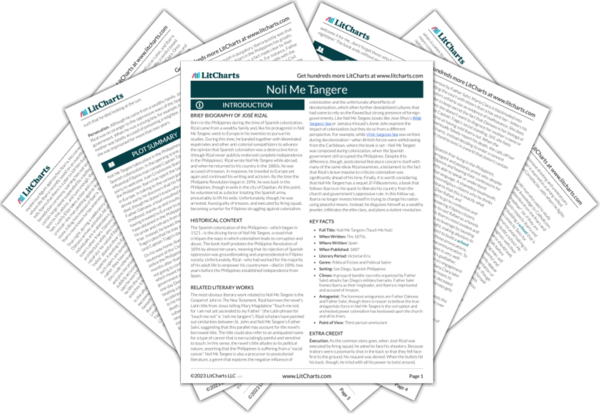Ibarra’s effort to build a school in the town of San Diego is the most tangible manifestation of his political views. The school is a symbol of empowerment, since education is a way to avoid succumbing to the country’s domineering friarocracy. Children like Crispín and Basilio are perfect examples of Filipinos who stand to benefit from a secular education, since their hardship is the direct result of having committed themselves to becoming sextons. If they had been offered the opportunity to attend school instead, they wouldn’t find themselves mired in the harmful lies and accusations of the church. The presence of Ibarra’s school in Noli Me Tangere also reveals the many tensions between church and state in the Philippines, considering that people like Father Dámaso and Father Salví actively interfere with the schoolmaster’s educational pursuits, while the Captain General—the most important government official on the island—adamantly supports Ibarra’s vision. And although Ibarra himself originally gains permission from the priests before building his institution, it is telling that he’s nearly murdered during the school’s benediction ceremony; this clearly illustrates that secular education poses a threat to the corrupt priests, a threat so large they feel they must murder somebody who has—for all intents and purposes—paid them the proper respect. As such, the school becomes a menace to the friars, despite the fact that it is an institution dedicated to helping and improving San Diego.








